The Role of Gamification in Motivating Students
Gamification in learning has been shown to significantly enhance student engagement and motivation. For instance, 67% of students find gamified learning more motivating and engaging than traditional courses.
Additionally, incorporating game-like elements into the learning process can lead to a 50% improvement in student productivity. However, it’s crucial to design these experiences thoughtfully to ensure they align with
- Gamification can increase student engagement and motivation by incorporating game-like elements into the learning process.
- It can provide a sense of accomplishment and progress, encouraging students to persevere through challenges.
- Gamification can foster collaboration and teamwork, creating a more interactive and social learning environment.
- It can be applied to various subjects and learning environments, from K-12 classrooms to corporate training programs.
- But it's important to design gamified learning experiences carefully to ensure they align with learning objectives and avoid unintended consequences.
Sounds intriguing? Let’s dive deeper into how gamification can transform the learning experience and explore the key elements that make it effective.
What is Gamification in Learning?
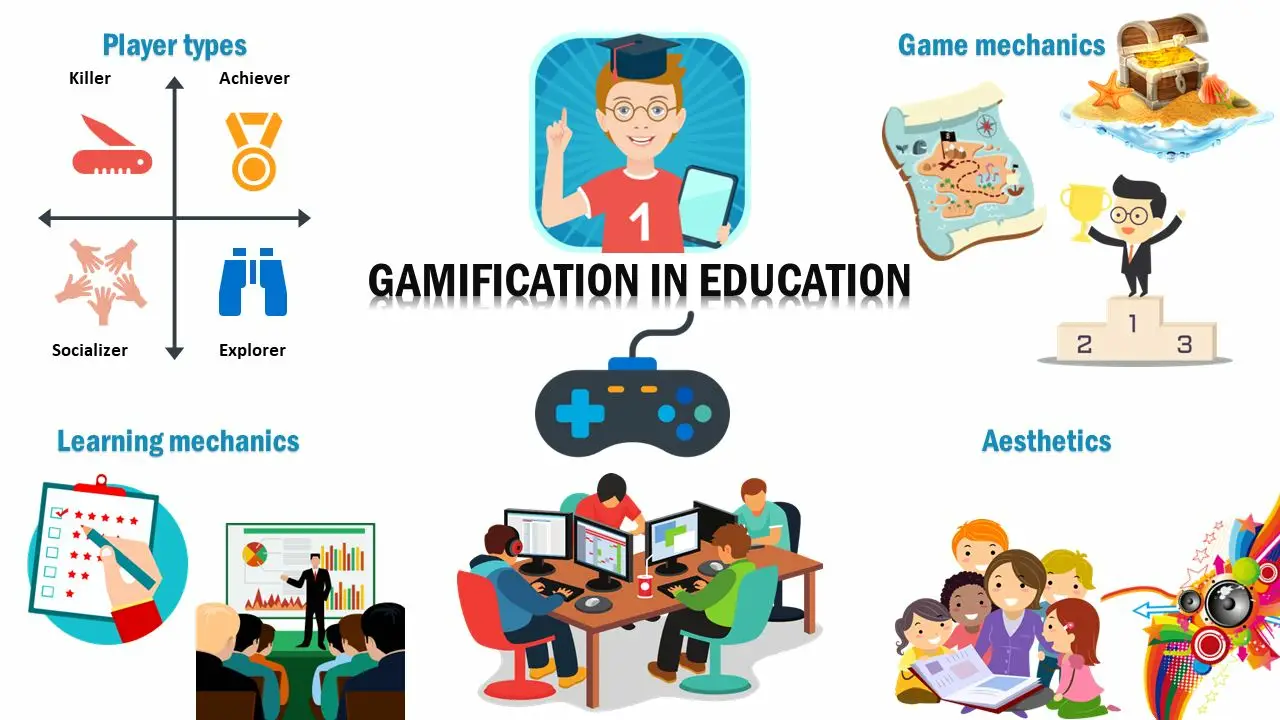
Gamification in learning is like adding a secret sauce to your lessons. It’s about incorporating game-like elements into the learning process to make it more engaging, motivating, and fun. Think points, badges, leaderboards, challenges, and rewards – all designed to tap into our natural instincts for competition and achievement.
But it’s not just about slapping on some game mechanics and calling it a day. Effective gamification is about understanding how these elements can be used strategically to enhance learning and achieve specific educational goals. It’s about creating an immersive, interactive experience that motivates students to learn and grow.
Why Gamification Works: The Psychology Behind It
Why does gamification work so well? It all comes down to human psychology. Our brains are wired to respond to rewards, challenges, and social interaction. Gamification taps into these innate drives, making learning feel more rewarding and enjoyable.
- Dopamine and Motivation: When we achieve a goal or receive a reward, our brains release dopamine, a neurotransmitter associated with pleasure and motivation. Gamification triggers this dopamine release, making us feel good about learning and encouraging us to continue.
- Sense of Accomplishment: Gamification provides a sense of accomplishment and progress, which can particularly motivate students who struggle with traditional learning methods. Earning badges, levelling up, and completing challenges give students a tangible sense of achievement.
- Social Interaction and Collaboration: Many gamified learning experiences incorporate social elements, such as teamwork, competition, and collaboration. This can foster community and make learning more interactive and engaging.
- Intrinsic Motivation: While extrinsic rewards, such as points and badges, can motivate in the short term, gamification can also tap into intrinsic motivation by making learning more enjoyable and meaningful.
Key Elements of Gamification in Learning
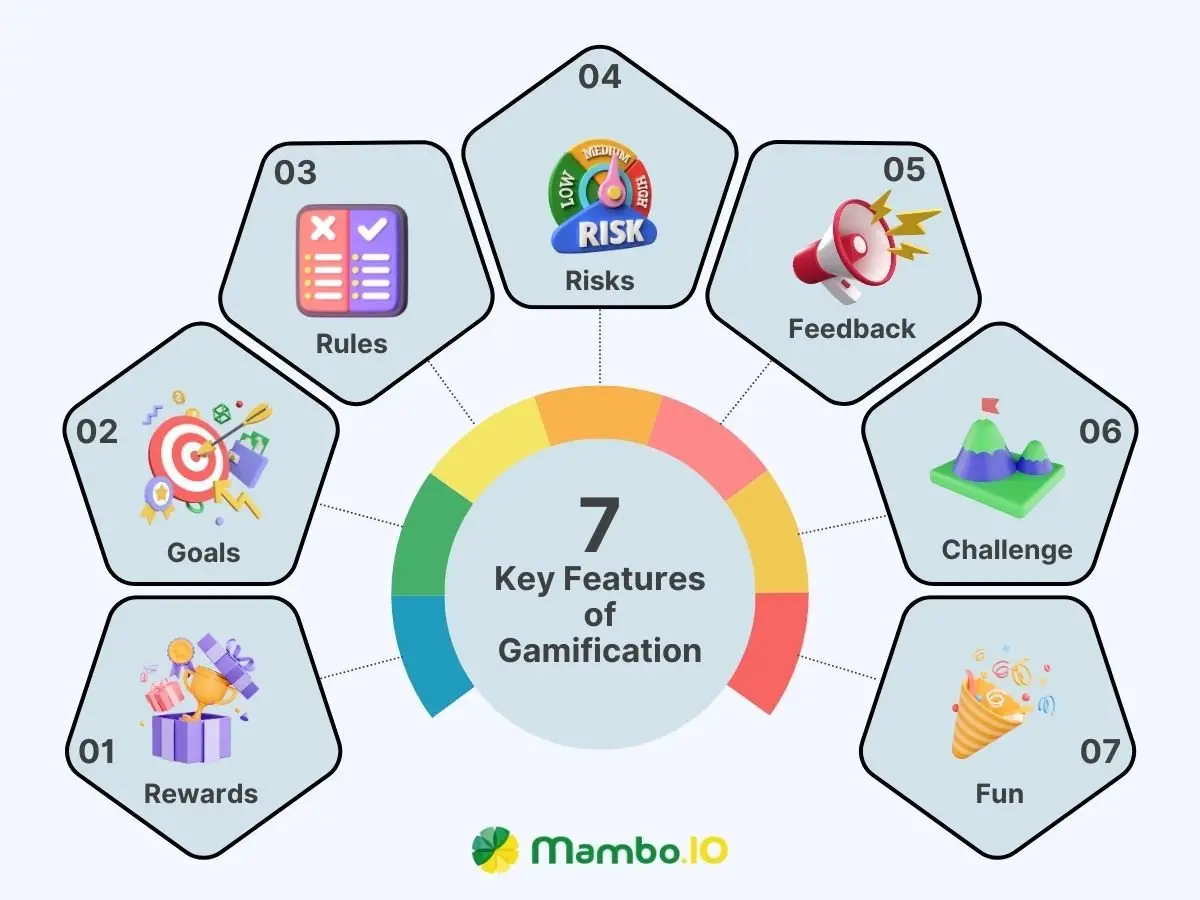
Effective gamification involves incorporating various game mechanics and design elements into the learning experience. Here are some key elements to consider:
1. Challenges and Goals
Setting clear challenges and goals is crucial in gamification. These challenges should be challenging yet attainable, providing students with purpose and direction.
- Clear Objectives: Each challenge should have a clear objective that outlines what students need to achieve. This provides focus and helps students track their progress.
- Gradual Progression: Challenges should be structured to allow for gradual progression, starting with easier tasks and gradually increasing in difficulty. This helps students build confidence and avoid feeling overwhelmed.
- Meaningful Challenges: Challenges should be relevant to the learning material and aligned with learning objectives. This ensures that the gamified experience enhances learning rather than distracting from it.
2. Points and Rewards
Points and rewards are a staple of gamification, providing students with immediate feedback and a sense of accomplishment.
- Meaningful Rewards: Rewards should be meaningful and relevant to the learning experience. They could be virtual badges, bonus content access, or real-world prizes.
- Variety of Rewards: Offering a variety of rewards can cater to different student preferences and keep them engaged. Some students might be motivated by virtual currency, while others might prefer recognition or special privileges.
- Clear Reward System: The reward system should be clearly defined and transparent so students understand how they can earn rewards and what those rewards represent.
3. Leaderboards and Competition
Leaderboards and competition can add an element of excitement and motivation to gamified learning. However, using competition carefully is important to avoid creating a negative or stressful learning environment.
- Healthy Competition: Competition should be friendly and encourage students to strive for their best, not discourage struggling students.
- Collaboration and Teamwork: Leaderboards can also encourage collaboration and teamwork, with students working together to achieve a common goal.
- Alternative Ranking Systems: Consider using alternative ranking systems, such as points for effort or improvement, to ensure that all students feel valued and motivated.
4. Feedback and Progress Tracking
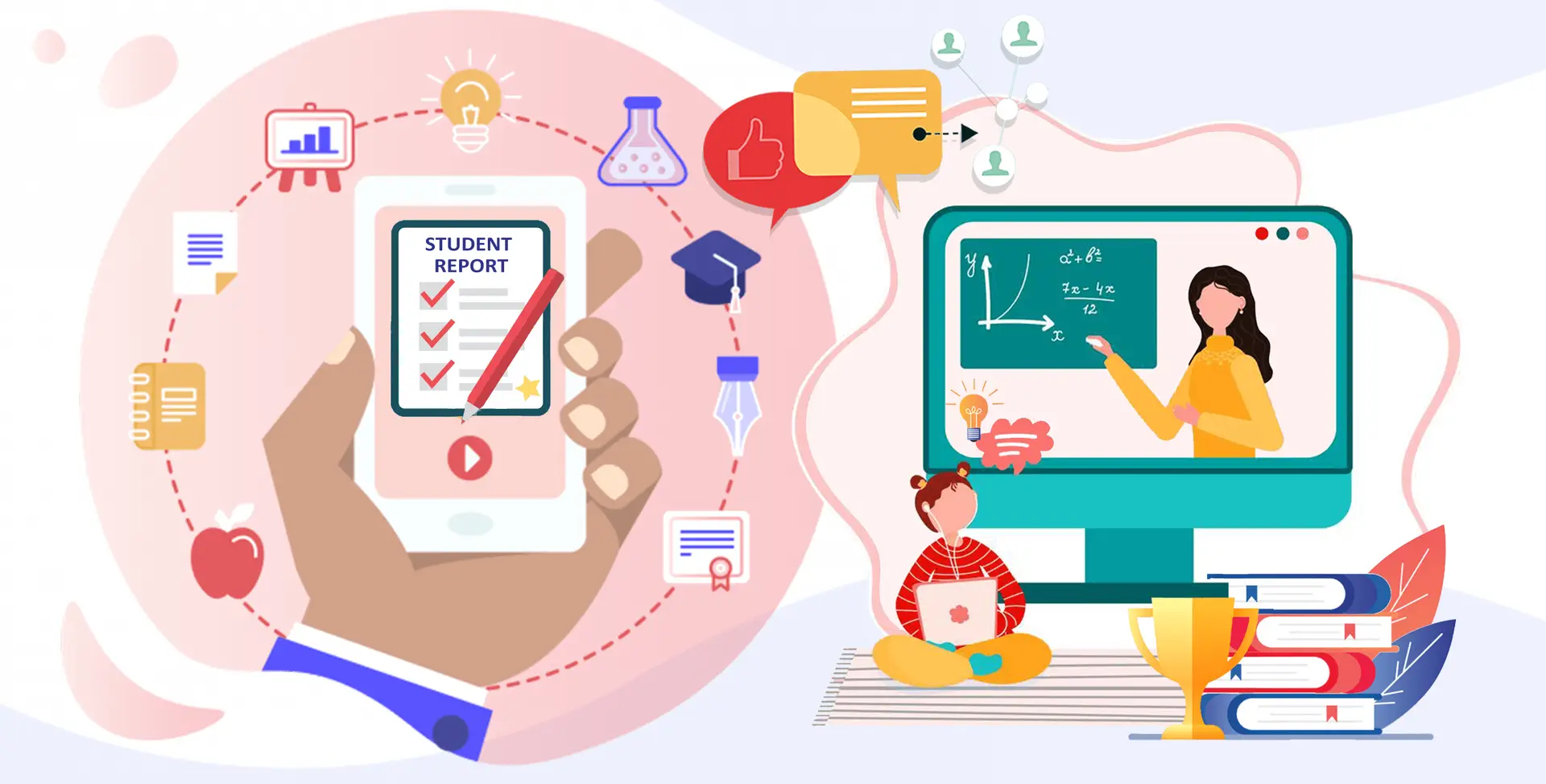
Providing regular feedback and allowing students to track their progress is essential in gamification. This helps students stay motivated and see the impact of their efforts.
- Real-time Feedback: Provide immediate feedback on student performance, allowing them to learn from their mistakes and improve their skills.
- Progress Visualization: Use visual tools, such as progress bars, charts, and graphs, to help students visualize their progress and see how far they've come.
- Personalized Feedback: Offer personalized feedback that addresses individual student needs and provides specific guidance for improvement.
5. Storytelling and Narrative
Incorporating storytelling and narrative into gamified learning can create a more immersive and engaging experience. This can help students connect with the learning material deeper and make it more memorable.
- Engaging Storylines: Create engaging storylines that capture students' imaginations and make them feel part of a larger adventure.
- Character Development: Students should be able to create or customize their own characters, which will give them a sense of ownership and agency within the gamified world.
- Meaningful Choices: Incorporate choices and consequences into the narrative, allowing students to shape their learning journey.
Examples of Gamification in Education
Gamification is being used in various educational settings, from K-12 classrooms to corporate training programs. Here are a few examples:
- Classcraft: This platform transforms the classroom into a role-playing game, with students taking on different roles, earning points, and leveling up.
- Kahoot!: This popular platform uses quizzes and games to make learning fun and interactive, with students competing against each other in real-time.
- Minecraft: Education Edition: This version of the popular game allows students to explore virtual worlds, build structures, and solve problems in a collaborative and engaging environment.
- Duolingo: This language learning app uses gamification to motivate learners, with points, badges, and leaderboards encouraging them to practice and progress.
- Google Classroom: This platform incorporates gamification elements like badges and points to recognize student achievement and encourage participation.
Tips for Implementing Gamification in Learning
If you’re considering implementing gamification in your classroom or training program, here are a few tips to keep in mind:
- Align with Learning Objectives: Ensure that the gamified elements align with your learning objectives and enhance, rather than distract from, the learning experience.
- Keep it Simple: Start with simple gamification mechanics and gradually introduce more complex elements as students become familiar with the system.
- Provide Choice and Autonomy: Allow students to have some choice and autonomy within the gamified environment, such as choosing their own avatars or selecting their preferred rewards.
- Foster Collaboration and Teamwork: Incorporate social elements like teamwork and collaboration to create a more interactive and engaging learning environment.
- Provide Regular Feedback: Offer regular feedback on student performance and progress, helping them stay motivated and see the impact of their efforts.
- Evaluate and Iterate: Continuously evaluate the effectiveness of your gamification strategy and make adjustments as needed to ensure it's meeting your learning objectives.
- Utilize SaaS Apps: Take advantage of SaaS (Software as a Service) apps or online tools to easily create and manage your gamified learning activities.
Learning Material Gamification: A Deeper Dive
Gamifying your learning materials can significantly increase engagement and knowledge retention. Here’s a breakdown of how to effectively gamify different types of learning materials:
1. Gamifying Textbooks and Readings
Traditional textbooks can be dry and unengaging. Gamification can breathe new life into these materials, making them more interactive and stimulating.
- Interactive Quizzes and Challenges: Embed interactive quizzes and challenges throughout the text to test comprehension and reinforce key concepts.
- Progress Tracking and Rewards: Students should be able to track their progress through the textbook and earn rewards for completing chapters or achieving specific milestones.
- Augmented Reality: Use augmented reality to bring textbook content to life, allowing students to interact with 3D models, animations, and virtual tours.
2. Gamifying Lectures and Presentations
Lectures and presentations can be more engaging with gamification elements.
- Interactive Polls and Quizzes: Use interactive polls and quizzes to gauge student understanding and encourage active participation.
- Points and Rewards for Participation: Award points and rewards for active participation, such as answering questions, contributing to discussions, and sharing insights.
- Gamified Presentation Tools: Explore gamified presentation tools that allow you to create interactive slides with game-like elements, such as branching scenarios, challenges, and rewards.
3. Gamifying Online Courses and eLearning
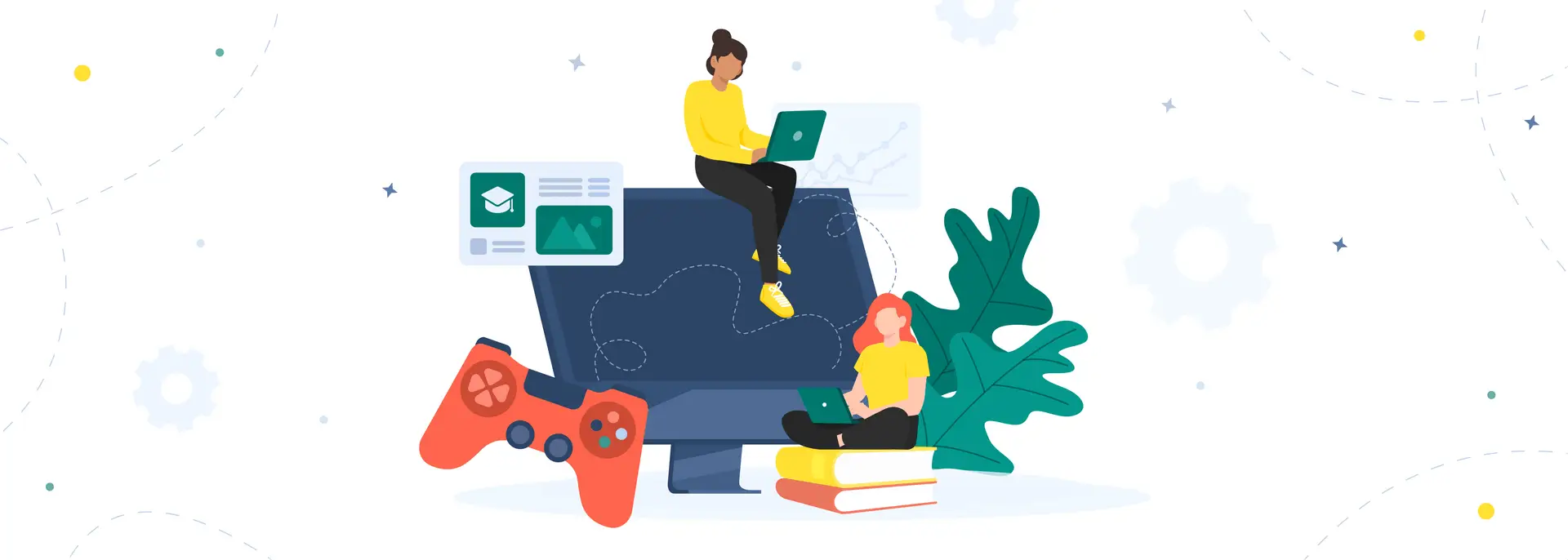
Online courses and eLearning platforms are particularly well-suited for gamification.
- Progress Bars and Leveling Up: Visualize student progress with progress bars and allow them to level up as they complete modules or achieve specific milestones.
- Badges and Achievements: Award badges for completing challenges, mastering skills, or demonstrating exemplary performance.
- Interactive Simulations and Games: Incorporate interactive simulations and games that allow students to apply their knowledge fun and engagingly.
- Personalized Learning Paths: Use AI to personalize learning paths based on student performance and preferences, creating a more tailored and engaging experience.
4. Gamifying Assessments and Evaluations
Even assessments and evaluations can be gamified to reduce anxiety and increase motivation.
- Timed Challenges: Turn assessments into timed challenges, creating excitement and encouraging students to work efficiently.
- Instant Feedback and Rewards: Provide instant feedback on student performance and award rewards for achieving specific scores or demonstrating mastery.
- Gamified Assessment Platforms: Explore gamified assessment platforms that offer interactive quizzes, games, and simulations to assess student learning more engagingly.
Addressing Potential Challenges and Criticisms of Gamification
While gamification offers many benefits, it’s important to be aware of potential challenges and criticisms and address them proactively.
- Overemphasis on Extrinsic Motivation: While extrinsic rewards can motivate in the short term, it's important to ensure that gamification fosters intrinsic motivation by making learning enjoyable and meaningful.
- Potential for Distraction: If not implemented carefully, gamification can become a distraction rather than an enhancement to learning. Ensure that the gamified elements are aligned with learning objectives and contribute to a deeper understanding of the material.
- Equity and Accessibility: Ensure that all students have equal access to the technology and resources required for gamified learning experiences. Consider alternative gamification strategies for students who may not have access to devices or internet connectivity.
- Over-Competition: Avoid creating an overly competitive environment that could discourage or demotivate some students. Encourage collaboration and teamwork, and consider alternative ranking systems that recognize effort and improvement.
The Future of Gamification in Learning
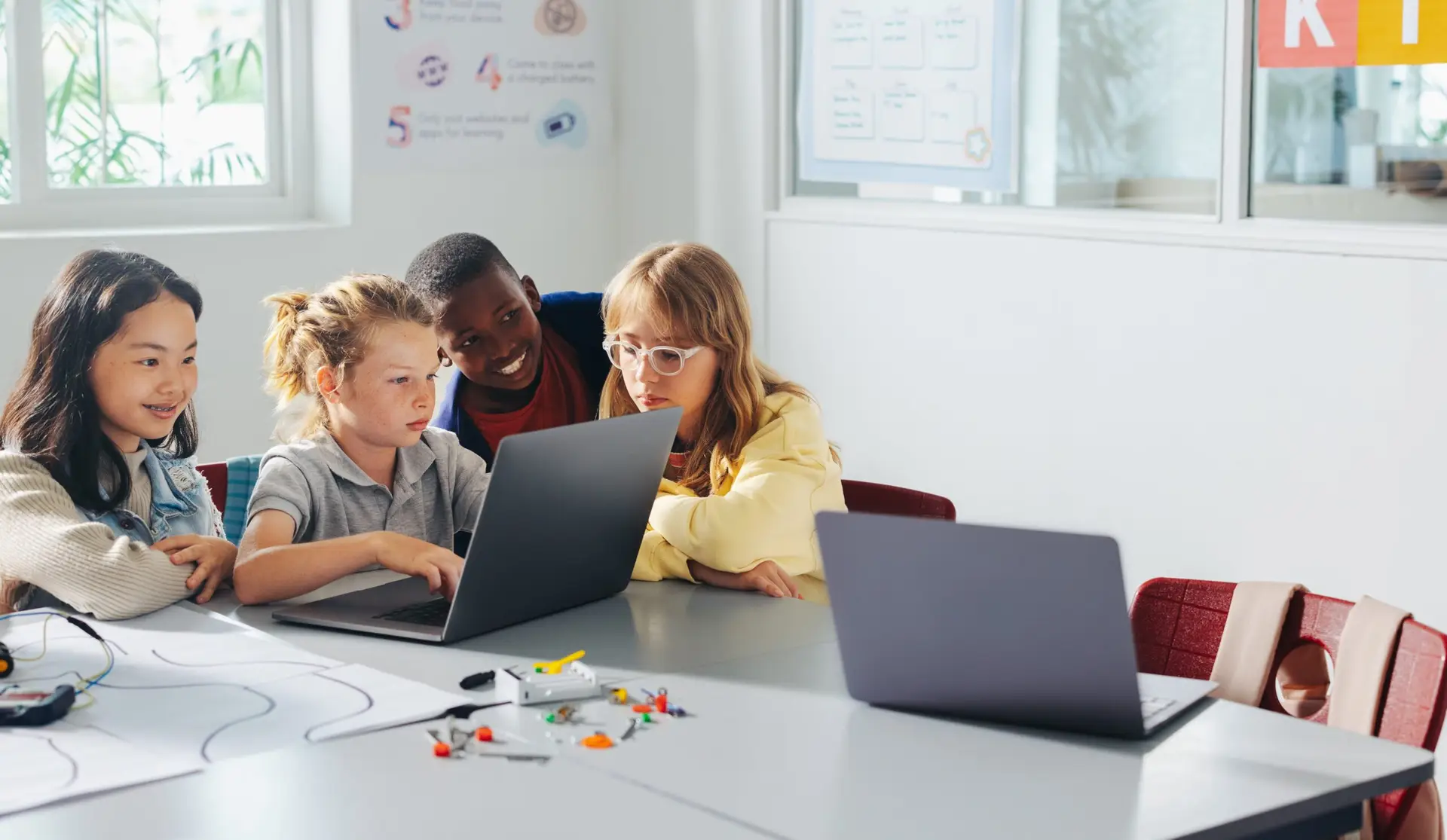
The future of gamification in learning is bright, with emerging technologies and trends promising to create even more immersive and engaging learning experiences.
- Artificial Intelligence (AI): AI can personalize gamified learning experiences, adapting to individual student needs and providing tailored challenges and rewards.
- Virtual Reality (VR) and Augmented Reality (AR): VR and AR can create immersive learning environments that transport students to different worlds and allow them to interact with virtual objects and characters.
- Mobile Gamification: Mobile devices offer a readily accessible platform for gamified learning, allowing students to learn anytime, anywhere.
- Social Gamification: Social media and online communities can be integrated into gamified learning experiences, fostering student collaboration and competition.
Final Thoughts
Gamification in learning is a powerful tool for increasing student engagement, motivation, and achievement. By incorporating game-like elements into the learning process, we can tap into our natural instincts for competition, achievement, and rewards, making learning more fun and effective.
So, what are your next steps?
- Experiment with gamification in your classroom or training program: Start by incorporating simple gamification elements, such as points, badges, and leaderboards, and gradually introduce more complex mechanics as you gain experience.
- Explore different gamification platforms and tools: Research and experiment with different gamification platforms and tools to find the ones that best suit your needs and learning objectives.
- Stay informed about the latest trends in gamification: Keep up with the latest trends and innovations in gamification in learning by reading blogs, attending conferences, and connecting with other educators.
- Share your experiences and best practices: Share your experiences with gamification and learn from other educators by participating in online communities and attending workshops.
By embracing gamification and implementing it thoughtfully, you can create a more engaging, motivating, and effective learning experience for your students. Book a demo or try out different platforms to see which one works best for your classroom.
Author
-

The PathBuilder team is a dynamic group of dedicated professionals passionate about transforming education through adaptive learning technology. With expertise spanning curriculum design, AI-driven personalization, and platform development, the team works tirelessly to create unique learning pathways tailored to every student’s needs. Their commitment to educational innovation and student success drives PathBuilder’s mission to redefine how people learn and grow in a rapidly changing world.
View all posts







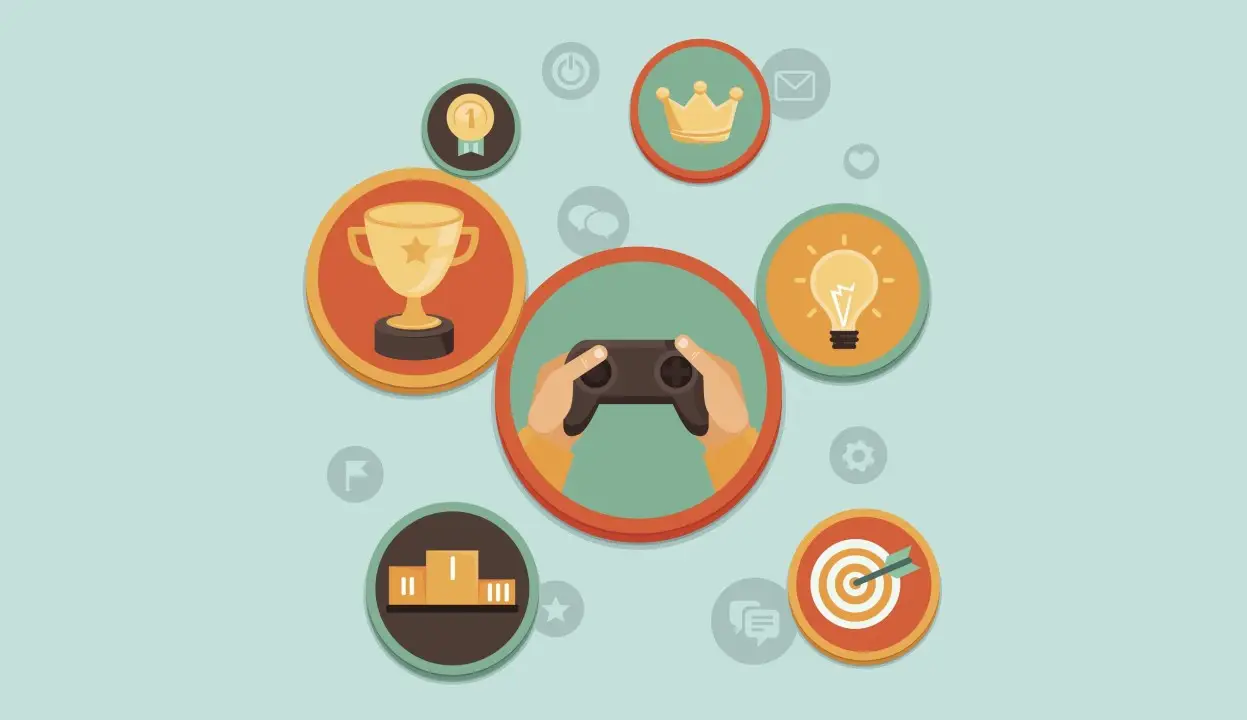









The PathBuilder team is a dynamic group of dedicated professionals passionate about transforming education through adaptive learning technology. With expertise spanning curriculum design, AI-driven personalization, and platform development, the team works tirelessly to create unique learning pathways tailored to every student’s needs. Their commitment to educational innovation and student success drives PathBuilder’s mission to redefine how people learn and grow in a rapidly changing world.